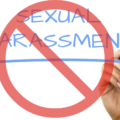You may have left your school halls, but bullying is alive and well in the workplace!
The nonprofit Workplace Bullying Institute (WBI) released results from its Workplace Bullying Survey that indicate bullying is a prevalent issue in the workplace. Here are some of the highlights from the survey:
- 35% of workers have experienced bullying firsthand
- 15% witnessed bullying
- 62% of bullies are men
- 58% of targets are women
- 68% of bullying is same-gender harassment
Read more from the source: Workplace Bullying Affects Workplace Employees
In recent weeks much has been in the news about bullying. CNN even took a week to focus on the topic and it primarily addressed how this issue relates to youth in today’s modern world. Unfortunately, bullying is more widespread and is found far beyond the school halls. Every company should really take a stance towards bullying by communicating a clearly defined policy against harassment at the minimum. Anti-bullying policies may seem unnecessary to the person who has never been faced with the circumstance. Regardless, bullying can take many forms in the workplace. Having a clearly communicated and acknowledged policy that is upheld can really help an organization to define behaviors that will ensure that all employees are treated with dignity and respect.
Bullying may be intentional or unintentional. However, it must be noted that where an allegation of bullying is made, the intention of the alleged bully is irrelevant, and it may not be given consideration in the course of an internal investigation. As in sexual harassment, it is the effect of the behavior upon the individual which is important. Companies should consider the following types of behavior examples of bullying:
- Verbal Bullying: slandering, ridiculing or maligning a person or his/her family; persistent name calling which is hurtful, insulting or humiliating; using a person as butt of jokes; abusive and offensive remarks.
- Physical Bullying: pushing; shoving; kicking; poking; tripping; assault, or threat of physical assault; damage to a person’s work area or property.
- Gesture Bullying: non-verbal threatening gestures, glances which can convey threatening messages
- Exclusion: socially or physically excluding or disregarding a person in work-related activities
In addition, the following examples may constitute or contribute to evidence of bullying in the workplace:
- Persistent singling out of one person
- Shouting, raising your voice of an individual in public and/or in private to the point they are threatened, alarmed or made to feel uncomfortable
- Using verbal or obscene gestures
- Personal insults and use of offensive nicknames
- Public humiliation in any form to include public reprimands
- Constant criticism on matters unrelated or minimally related to the person’s job performance or description
- Repeatedly accusing someone of errors which cannot be documented
- Deliberately interfering with mail and other communications
- Spreading rumors and gossip regarding individuals
- Encouraging others to disregard a member of management’s instructions
- Manipulating the ability of someone to do their work (e.g. under loading, withholding information, giving deliberately ambiguous instructions)
- Taking credit for another person’s ideas
- Refusing reasonable requests for time away from work without presence of work-related reasons worthy to not grant time away from work with advance notice
- Deliberately excluding an individual or isolating them from work-related activities tied to their respective departmental areas (meetings, etc.)
- Unwanted physical contact, physical abuse or threats of abuse to an individual or an individual’s property (defacing or marking up property).
Now, I am confident that many attorneys would question the necessity to communicate an Anti-Bullying policy in addition to a Harassment policy. Certainly, by incorporating such a policy in your handbook you would be going above and beyond your legal obligations. Doing so could require an employer to provide more protections than they are required to provide by law. Despite this fact, I have found that when a bully is discovered in the workplace, having such a policy allows for improved employee relations and effective decisions without fear of recourse. I have honestly found that when a bully is in the workplace, most employers are at a loss at how to go about addressing the issue. To not address an issue such as workplace bullying, an organization risks decreased productivity, workplace violence, increased turnover and worst of all, your best talent will go work for your competition! Whether you elect to put a written policy in place or not, you should never turn a blind eye in fear of a lawsuit or retribution from an aggressive employee. If you have an Employee Assistance Program (EAP) they may have trained professionals that can be of assistance but I would advise that you have a qualified HR resource to guide you through the in-house training, policy development and in certain scenarios, the internal investigation that may be required in response to a complaint.





